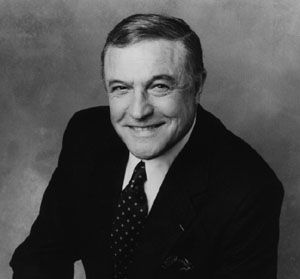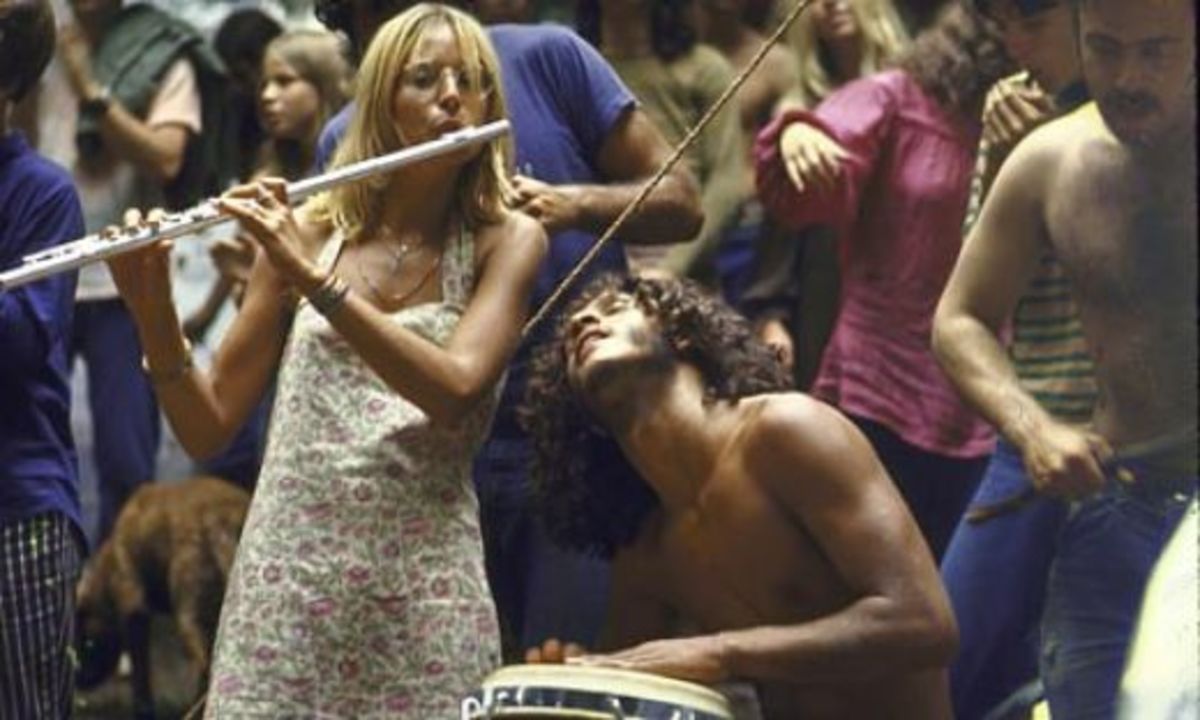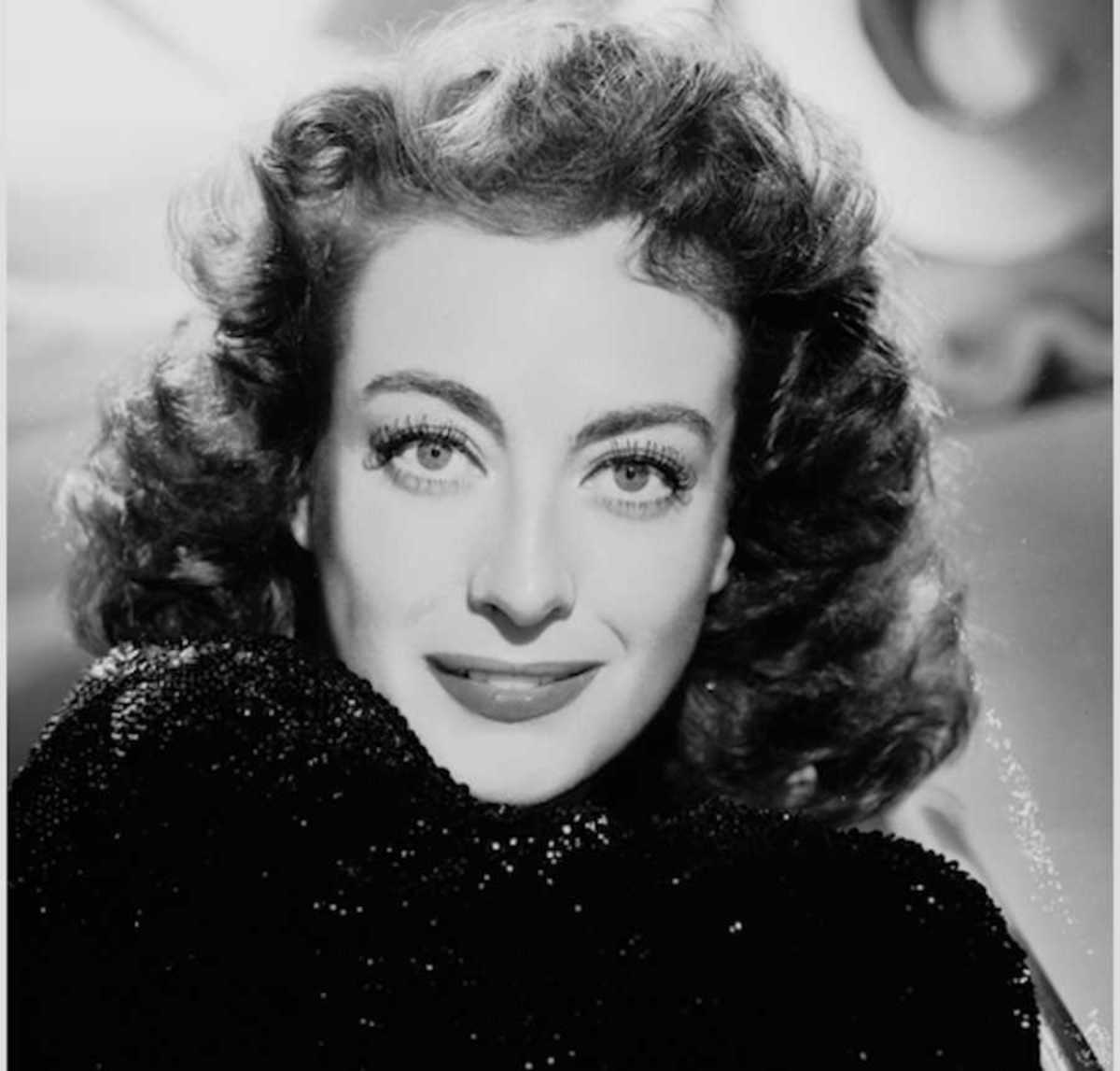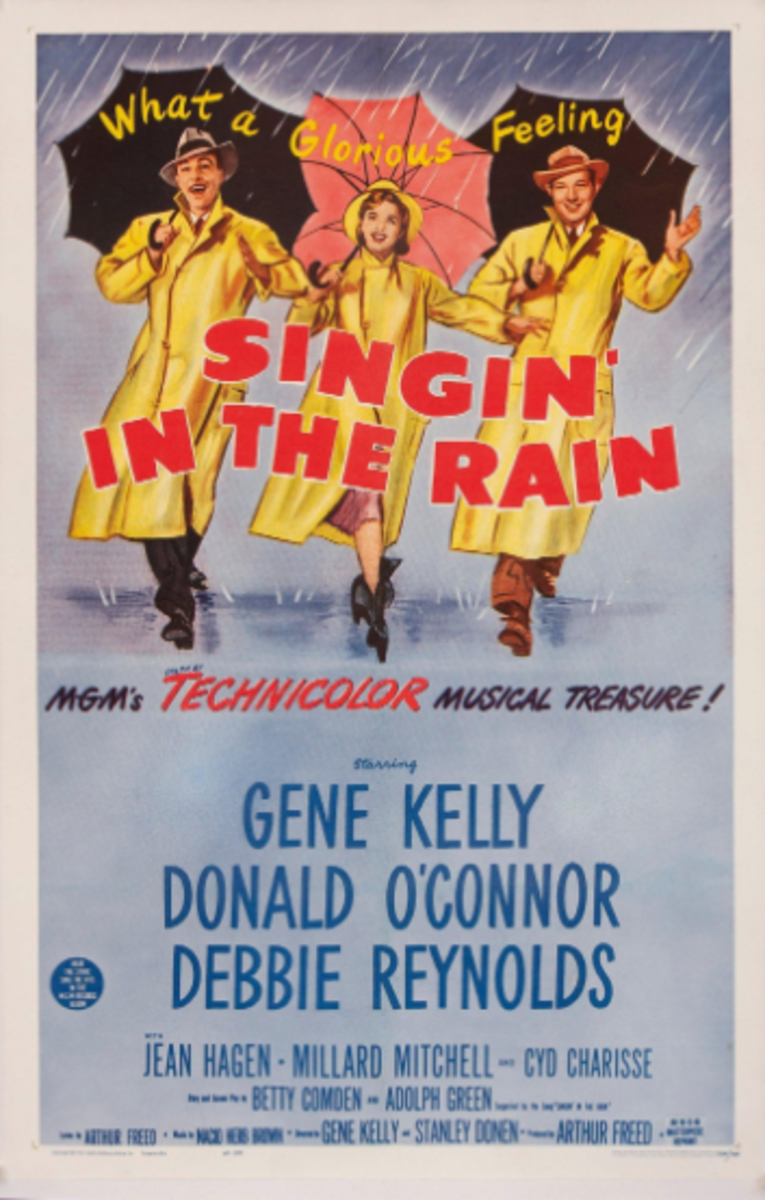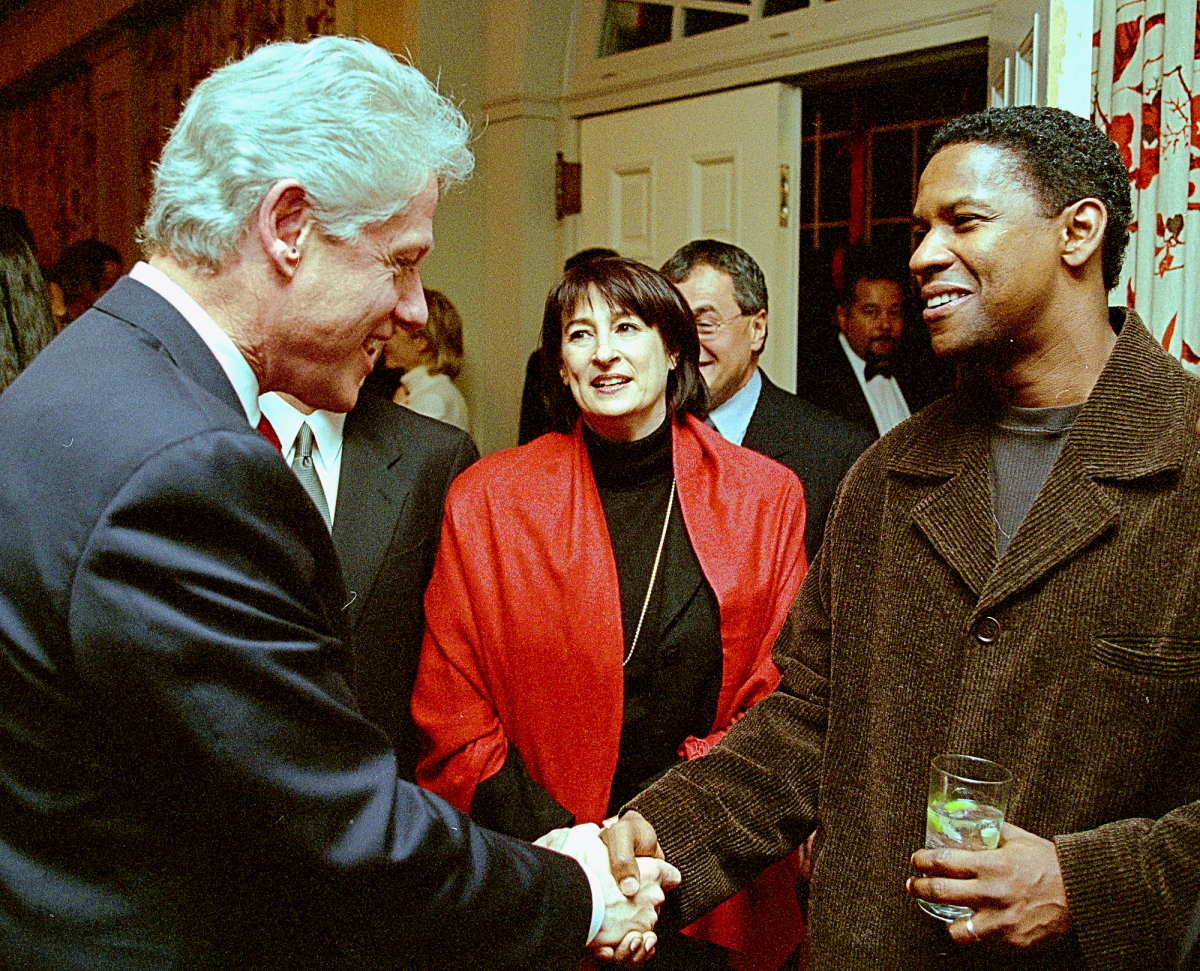Gene Kelly, Dancing's Creative Genius
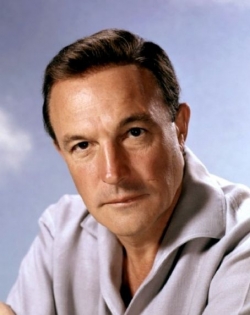
Multi-talented Gene Kelly
Although Gene Kelly's main reputation rests on his ability as a dancer, he was also an actor, singer, choreographer, and director, truly an immense and prolific Hollywood talent and creative genius.
He comes in at number 15 on AFI's millennium list of most popular actors and his most famous screen work, Singin' in the Rain, has been voted the single most popular movie musical of all time.
He was a prodigeous talent and he produced all his best work in just 10 years, between the age of 30 and 40. As a dancer, Kelly was in the same league as Fred Astaire and there is no higher compliment. No other male dancer comes close to their astonishingly high standard. Yet just as he confirmed his place as one of the greatest talents ever seen in Hollywood, he started to vanish from public view. What happened?
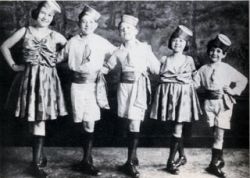
Early Years
He was born Eugene Curran Kelly in Pittsburgh, Pennsylvania on August 23, 1912, the middle son of 5 children (pictured from the left Jay, James, Gene, Louise, and Fred.). From his father, a gramaphone salesman, he inherited a love of sports, particularly ice hockey. His mother, Harriet, had loved dancing and acting as a young girl, and occasionally acted in local productions after her marriage. She it was who first sent him for dancing lessons when he was eight. Although at first he rebelled against it he later took to it enthusiastically and in his teens he and his brother, Fred, were making up dance routines for local talent contests. In grade school he and his siblings were billed as the "Five Dancing Kellys," with their iron-willed mother as manager. When a national vaudeville act called The Seven Little Foys missed its Pittsburgh bookings, the Five Dancing Kellys were called to replace it.
Click Here for the best of Classic Hollywood
In 1930, Gene and Fred joined their mother in rejuvenating a failing dance school in a local neighborhood of Pittsburgh. At this time Gene also enrolled at the University of Pittsburgh to study economics. He got his degree in 1933 and continued to teach dancing, very successfully. In 1937, having expanded the dance school business, he and his brother moved to New York City in search of work as a choreographer.
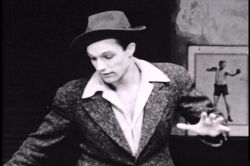
Early Recognition
Although at first unsuccessful, Kelly persevered, and within a year joined his first Broadway show, in the chorus of Leave It to Me, and in 1939 he got a larger role in the revue One for the Money, but his first big career breakthrough came at the end of the year in the Pulitzer Prize-winning The Time of Your Life (pictured right), where for the first time on Broadway he danced to his own choreography. He also received his first assignment as a Broadway choreographer, for Billy Rose's Diamond Horseshoe where he met his future wife, Betsy Blair, who was a member of the cast and they were married on October 16, 1941.
He was starting to become well known and his work was seen by Richard Rodgers, who cast him in the lead role of the Rodgers and Hart musical drama show, Pal Joey. The show was an unqualified success and brought him to the attention of David O. Selznick of MGM. Things were moving fast for Gene Kelly. Stardom and Hollywood beckoned.
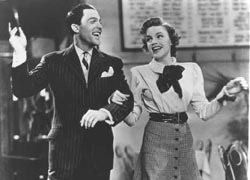
Hollywood
Gene and his new wife arrived in Hollywood in 1941 and Gene signed a contract with Selznick. Although Selznick encouraged Gene to focus more on dramatic acting, rather than dancing, he immediately loaned him to MGM to star opposite Judy Garland in 1942's For Me and My Gal (pictured right).
He proved to be an instant hit with the public who liked his nonchalant acting and athletic dancing style. At the insistence of producer Arthur Freed, MGM bought out the remainder of Kelly's Selznick contract. It was a move which would greatly benefit both Kelly and MGM and which would have a lasting impact on the future of Hollywood musicals.
Stardom
He achieved his big breakthrough as a movie dancer in 1944 when he was loaned out to Columbia to play opposite Rita Hayworth in Cover Girl (1944), where he created a memorable routine and brought film dance to a new level, dancing and partnering his own reflection.
After Pearl Harbour Kelly requested and was given leave to enlist in the United States Naval Air Service. He was commissioned as lieutenant, junior grade and served in the Photographic Section where he became involved in writing and directing documentaries, all good training for the future.
His next film was for MGM in 1945 and he was given complete artistic licence to devise a range of dance routines. The film was the magnificent Anchors Aweigh which included the celebrated and much imitated animated dances with the mouse Jerry of Tom and Jerry, and his dancing duets with co-star Frank Sinatra. It is interesting to watch if Sinatra can keep up with Kelly's dancing feet - he can't.
Anchors Aweigh became one of the most successful films of 1945 and it garnered Kelly his first and only Academy Award nomination for Best Actor.
In Ziegfeld Follies, released in 1946, Kelly famously teamed up with Fred Astaire in "The Babbitt and the Bromide" dance routine before leaving the studio for wartime service. He than appeared in a number of B-movie acting roles, now largely forgotten but the full flowering of his genius was shortly to be revealed. During the next few years Gene Kelly would create some of the most acclaimed musicals in Hollywood history.
(Framed Art Print -18 in. x 12 in.)
For more information about this and other photos and posters,
please visit Allposters.com
The Flowering of Genius - Two years, two masterpieces
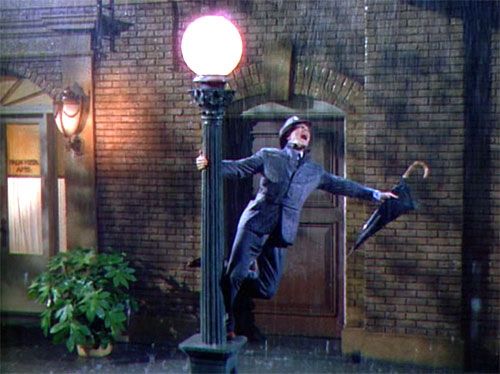
In 1949, Kelly and his friend and assistant, Stanley Donen, were assigned their own film to co-direct. It was the exuberant On the Town and it was the first musical film shot on location. There followed Kelly's two masterworks which set him apart from other directors and choreogrphers.
In 1951 An American in Paris, with its 17-minute ballet sequence, became one of the most acclaimed musicals in Hollywood history. It earned seven Academy Awards, including Best Picture, and Kelly himself was awarded a special Oscar for his "extreme versatility as an actor, singer, director and dancer, but specifically for his brilliant achievement in the art of choreography. The following year Gene not only matched this masterpiece, he bettered it.
Singin' in the Rain has been described as the best musical ever made. It is a tale of Hollywood at the start of the sound era, and in it the genre of musical comedy reaches heights not reached before or since. The movie perfectly mixes singing, dancing and comedy with a love interest. The performance of the title song by Gene Kelly remains among the most iconic and unforgettable sequences in film.
So, by the age of 40 and in the timespan of just 10 years, Kelly had achieved superstar status. He had reached the top, but he would not stay there, and it was a long way down.
Gene on Amazon
The MGM Musicals Decline
The remainder of Kelly's career was a long anticlimax after the dazzling heights he had reached. During the 1950s the drawing power of television grew dramatically. The public's tastes changed and the appetite for spectacular musicals as done by MGM dwindled. Gene's film career lost much of its momentum as the era of the mighty musical wound to a close.
Kelly traveled to Europe for tax reasons and made the poorly received The Devil Makes Three. In Britain, he began work on a planned all-ballet project, Invitation to the Dance, but the movie was never completed. Kelly also starred in Seagulls Over Sorrento before
returning to the US where his last few productions, including Brigadoon and the ambitious It's Always Fair Weather in 1955, failed to win critical or public appeal.
Kelly directed and starred in 1957's The Happy Road, but shortly after he was freed from his contract by MGM as they had no more musicals planned for production. Instead, Kelly starred in 1958's Marjorie Morningstar for Warners and then directed the romantic comedy The Tunnel of Love.

The Long Fade Out
On the personal side, Gene's marriage to Betsy Blair was beginning to show signs of strain, and by 1956 they were living separate lives. They eventually divorced in 1960 and Gene then married his longtime assistant, Jeanne Coyne (pictured with Gene, right), who had been a close personal friend of the family for many years, and who had had a brief marriage to Kelly collaborator Stanley Donen in 1948. Jeanne immediately gave up her show business life and settled down to a happy domesticity. She and Gene eventually had two children, a girl and a boy, together.
Kelly made the conscious decision to put his new wife and young family first, only accepting offers that didn't tke him away from home for too long, and consequently lost out on a number of projects.
In 1963 he joined Universal Picyures and two years later, 20th Century Fox. After a fallow period he successfully directed Walter Matthau in A Guide for the Married Man, in 1967, and then Matthau again in 1969's Hello, Dolly! which, although popular with the public, failed to recoup the enormous costs of production.
In 1972 Jeanne was diagnosed with leukemia, and died on May 10, 1973, just a few months past her fiftieth birthday. With two young children to raise alone, Kelly cut down even more on his work commitments.
Final Years
Public interest in Gene Kelly continued throughout his life, fuelled by the growing interest in Hollywood's cinematic past as exemplified by the MGM hit series That's Entertainment.
He made guest appearances on television, children's records and became a frequent advisor to younger filmmakers who were hoping to re-invigoratethe movie musical. During the last three decades of his life, he received dozens of awards and honours, among them the French Legion of Honour for his choreography of the Paris Opéra Ballet "Pas de Deux" (1960) and a Life Achievement Award from the American Film Institute.
In 1990, the 77 year old Kelly married 36 year old Patricia Ward.
In 1994, Gene made his last on-screen appearance, hosting "That's Entertainment III". Later that year he suffered a massive stroke followed by a series of strokes over the next few years. He was bedridden for the last months of his life.
He passed away peacefully on February 2, 1996. At his death it was said of Kelly, "Just as he confirmed his place as one of the most important talents ever to work in film, he went downhill so fast you hardly saw him go."
Summary
Gene Kelly’s work still has the capacity to thrill us. It is timeless, elegant artistry of the highest order.
Almost single-handedly he was responsible for creating a new approach to film musicals first as a performer, then as choreographer and then director.
He very cleverly became the 'common man dancer', bridging the gap between the two main movie musical dancing styles which had gone before: on the one hand the extravagant Busby Berkeley kaleidoscope patterns with hundreds of girls, and on the other the intimate, theatrical approach of Astaire.
With Kelly the movie musical reached its peak. We shall not see his like again.
Gene Kelly Videos - See Gene dancing right now on You Tube
Gene Kelly, Gentleman and Genius, 1912-1996
